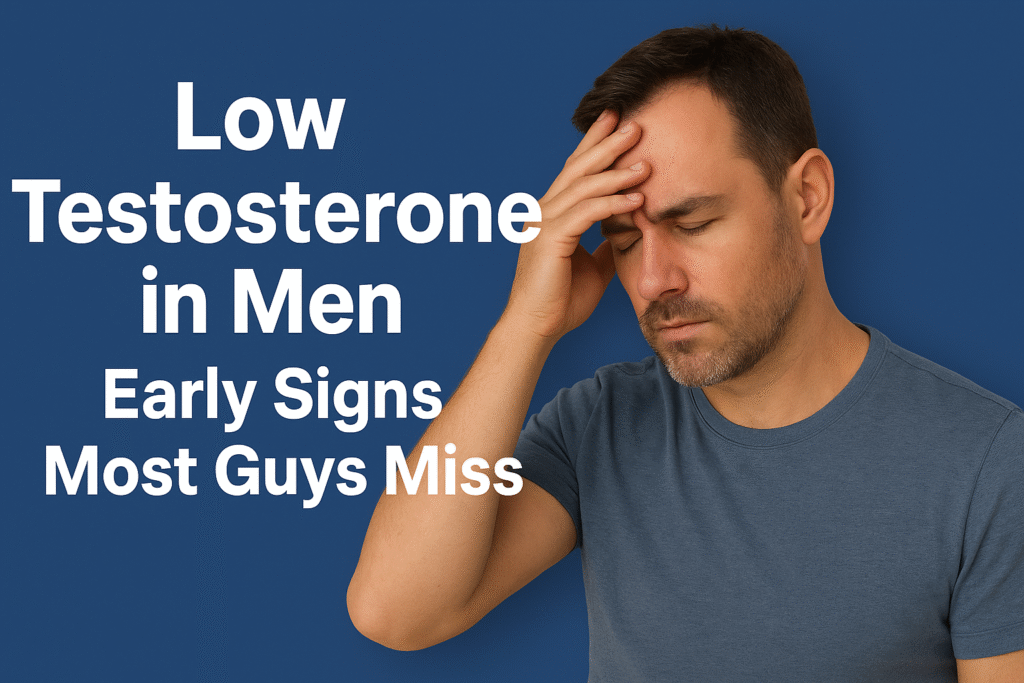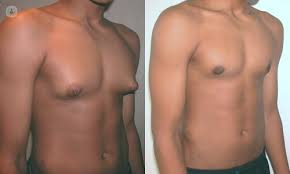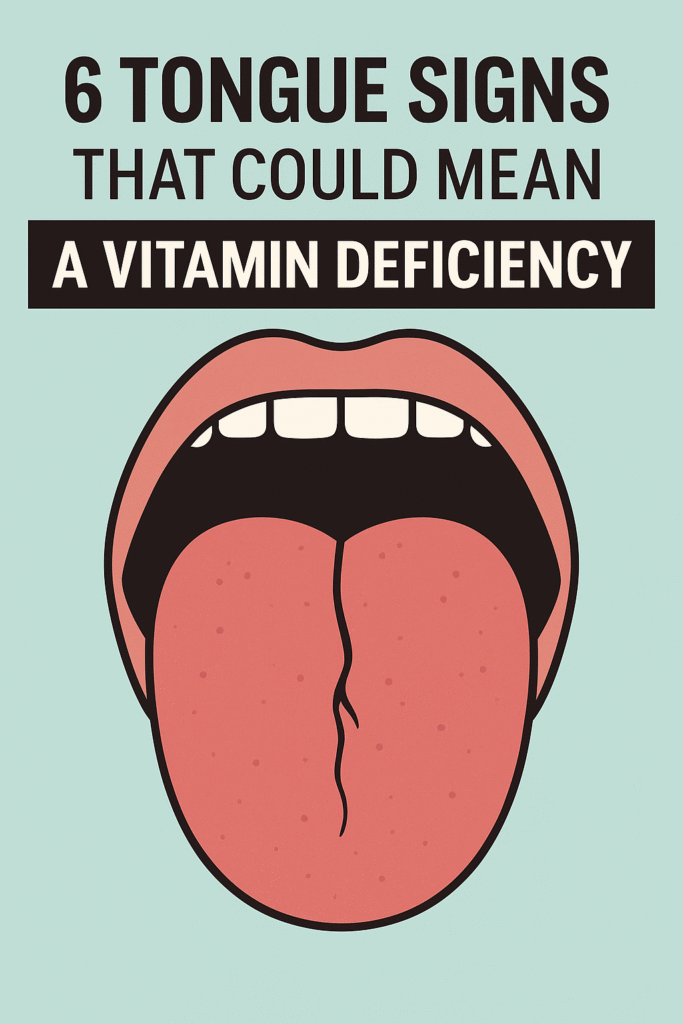
⚠️ Affiliate Disclaimer: This post may contain affiliate links, which means I may earn a small commission — at no extra cost to you — if you make a purchase through one of these links. I only recommend products or services I genuinely trust and believe can provide value. Thank you for supporting My Medical Muse!
Low Testosterone in Men: 10 Powerful Early Signs Most Guys Miss
Low Testosterone in Men: Early Signs Most Guys Miss
Testosterone is often referred to as the “male hormone” because of the powerful role it plays in shaping men’s health, vitality, and identity. From building muscle and bone strength to fueling energy, drive, and sexual performance, testosterone influences nearly every aspect of a man’s physical and mental well-being.
Yet, millions of men around the world live with low testosterone, often without even realizing it. Unlike sudden illnesses, testosterone decline can be silent and gradual, creeping in so subtly that most men chalk it up to aging, stress, or simply being “out of shape.” A little more belly fat, a dip in sex drive, constant fatigue, or even mood swings are shrugged off as normal life changes.
But here’s the truth: low testosterone is not just about getting older. Left unchecked, it can profoundly impact a man’s physical health, mental clarity, confidence, and even relationships. Studies have linked untreated low testosterone to obesity, diabetes, cardiovascular disease, depression, and reduced quality of life.
The good news? Low testosterone is both detectable and treatable. By recognizing the early warning signs, getting tested, and making timely lifestyle or medical changes, men can restore balance, improve vitality, and prevent long-term complications.
In this comprehensive guide, we’ll break down:
- The early signs of low testosterone most men miss
- Why testosterone is so critical for overall health
- Common causes of testosterone deficiency
- How doctors diagnose low testosterone
- Available treatments, from medical therapy to natural solutions
- Practical lifestyle strategies to help maintain healthy testosterone levels
If you’ve ever wondered why you’re more tired than usual, struggling to stay motivated, or not feeling like yourself, the answer might lie in your hormone balance. Let’s dive deeper into what every man should know about low testosterone before it starts controlling his life.
What Is Testosterone and Why Does It Matter?
Testosterone is a steroid hormone primarily produced in the testes in men, with smaller amounts coming from the adrenal glands. Though often labeled the “male hormone,” it plays a vital role in both men and women. In men, however, testosterone is central to many defining aspects of health, performance, and overall vitality.
This powerful hormone regulates and supports:
- Muscle mass and strength: Fueling muscle growth and repair.
- Bone density: Keeping bones strong and resistant to fractures.
- Sex drive (libido): Driving sexual desire and performance
- Sperm production: Maintaining fertility and reproductive health
- Red blood cell production: Supporting oxygen delivery throughout the body
- Energy levels: Influencing stamina and day-to-day vitality
- Mood and cognitive function: Stabilizing emotions, motivation, and mental sharpness
Testosterone levels naturally peak during the late teens and early twenties, powering the physical changes and energy surge of young adulthood. After age 30, however, levels begin a gradual decline of about 1% per year. While some decrease is part of normal aging, a significant or accelerated drop can trigger hypogonadism (low testosterone syndrome), a medical condition with wide-ranging health consequences if left untreated.
What Counts as Low Testosterone?
Because symptoms of low testosterone often overlap with other conditions, measuring hormone levels through a blood test is the most reliable way to confirm deficiency.
For adult men, the typical testosterone range is:
- 300 – 1,000 ng/dL (nanograms per deciliter)
Anything consistently below 300 ng/dL is usually considered clinically low. However, testosterone isn’t just about the number, it’s about how your body feels and functions. Many men experience noticeable symptoms such as fatigue, low libido, or mood changes even before levels fall below the clinical threshold.
This is why recognizing the early warning signs of low testosterone is so important. Catching the problem early allows for effective interventions, whether through lifestyle changes, medical treatment, or both before it causes lasting health issues.
Early Signs of Low Testosterone Most Men Miss
Low testosterone doesn’t usually hit like a lightning bolt. Instead, it creeps in gradually, with changes so subtle that many men dismiss them as normal signs of aging, stress, or simply working too hard. Unfortunately, these early symptoms are easy to ignore, but catching them early is key to preventing long-term health problems.
Here are the most common warning signs of low testosterone that often go unnoticed:
1. Reduced Sex Drive (Loss of Libido)
A sudden or gradual decline in sexual desire is often the first red flag. Men may notice that intimacy feels less appealing or that their interest in sex fades without explanation.
- Many blame stress, long work hours, or relationship issues.
- In reality, testosterone is a major driver of sexual motivation and performance, and low levels almost always reduce desire.
2. Erectile Dysfunction (ED) or Weaker Erections
Low testosterone doesn’t directly “cause” every case of erectile dysfunction, but it plays a critical role in the brain’s arousal pathways and blood flow.
- Men may notice fewer or weaker morning erections.
- Difficulty achieving or maintaining an erection becomes more common.
- Because testosterone works alongside nitric oxide (which relaxes blood vessels in the penis), low levels often reduce both erection strength and frequency.
3. Low Energy and Persistent Fatigue
One of the most frustrating symptoms of low testosterone is chronic tiredness. Even after a full night’s sleep, men may feel drained, sluggish, or unmotivated.
- Testosterone helps regulate energy metabolism.
- Deficiency slows recovery after physical activity and makes simple daily tasks feel exhausting.
4. Mood Swings, Irritability, or Depression
Hormones and mood are closely linked, and testosterone is no exception.
- Low testosterone can reduce serotonin and dopamine activity in the brain.
- This often leads to irritability, sudden mood changes, or feelings of sadness.
- In more severe cases, it can contribute to clinical depression and loss of motivation.
5. Loss of Muscle Mass and Strength
Even with regular workouts, men with low testosterone often notice that:
- Their muscles appear smaller or “flatter.”
- Strength declines despite consistent effort in the gym.
- Recovery from exercise takes longer than it used to.
This happens because testosterone is the key hormone for muscle protein synthesis, the process that builds and maintains lean muscle.
6. Increased Body Fat Especially Around the Belly
One of the most visible but overlooked signs of low testosterone is stubborn fat accumulation, particularly around the abdomen.
- Men may notice their waistline expanding even if their diet hasn’t changed.
- Low can also disrupt the balance between testosterone and estrogen, sometimes leading to gynecomastia (enlarged male breast tissue).

7. Difficulty Concentrating or “Brain Fog”
Men with low testosterone frequently report:
- Memory lapses
- Trouble focusing on tasks
- Slower problem-solving or decision-making
This “mental haze” is sometimes subtle but can interfere with work performance and daily productivity.
8. Sleep Problems
The relationship between sleep and testosterone is a vicious cycle:
- Testosterone is primarily produced during deep sleep.
- Poor sleep lowers testosterone, while low testosterone can make it harder to fall or stay asleep.
- Symptoms may include insomnia, restless nights, or excessive daytime sleepiness.
9. Reduced Beard Growth or Thinning Body Hair
Testosterone fuels the development of facial and body hair during puberty. When levels decline:
- Men may notice slower beard growth.
- Body hair (chest, arms, legs) can thin out.
- While genetics play a role, low T accelerates these changes.
10. Weaker Bones and Joint Pain
Testosterone is essential for bone mineral density, without it:
- Bones gradually weaken, raising the risk of early osteoporosis.
- Men may experience unexplained back pain, joint stiffness, or frequent aches.
The tricky part is that these signs rarely show up all at once. They often appear gradually, sometimes overlapping with stress, poor diet, or lack of exercise, making it easy to miss the real culprit. If you’re noticing two or more of these symptoms consistently, it may be worth getting your testosterone levels checked.
Causes of Low Testosterone
Testosterone levels don’t just drop without reason. While aging is the most well-known factor, many lifestyle habits, medical conditions, and genetic issues can accelerate or worsen the decline. Understanding these root causes can help men take preventive steps or seek timely treatment.
1. Aging
After age 30, testosterone naturally declines at a rate of about 1% per year. While this slow decrease is part of normal aging, some men experience a much steeper drop, leading to symptoms earlier in life.
2. Obesity
Excess body fat, especially around the belly plays a major role in low testosterone. Fat tissue contains an enzyme called aromatase, which converts testosterone into estrogen. The more fat tissue you carry, the more testosterone gets “stolen” and converted, leaving you with lower levels.
3. Chronic Stress
Stress triggers the release of cortisol, a hormone that helps the body respond to pressure. But when cortisol remains high for long periods, it suppresses testosterone production. This is why men under chronic stress often report low energy, decreased libido, and difficulty building muscle.
4. Poor Sleep
Testosterone is mainly produced during deep REM sleep. Men who get less than 6 hours of quality sleep or who struggle with conditions like sleep apnea often have lower testosterone levels. Poor sleep not only reduces testosterone but also makes it harder for the body to recover.
5. Medical Conditions
Certain health issues directly interfere with testosterone production:
- Type 2 diabetes and metabolic syndrome disrupt hormone balance.
- Thyroid disorders can affect overall endocrine health.
- Chronic illness such as kidney or liver disease may also lower testosterone.
6. Testicular Injury or Infection
The testes are the primary site of testosterone production. Trauma, surgery, or infections (such as mumps orchitis) can damage this function permanently.
7. Alcohol and Drug Abuse
Excessive alcohol intake damages the testes and liver, both of which are crucial for hormone production. Recreational drug use (anabolic steroids, opioids, or marijuana) can also disrupt the natural hormonal balance.
8. Medications
Some prescription drugs suppress testosterone, including:
- Long-term opioid painkillers
- Certain steroids
- Chemotherapy drugs used in cancer treatment
- Antidepressants (in some cases)
9. Genetics
Genetic disorders can cause lifelong low testosterone. For example, Klinefelter syndrome, a condition where men are born with an extra X chromosome, impairs testicular function.
How Low Testosterone Affects Long-Term Health
Many men dismiss low testosterone as just a sexual health issue, but the truth is, it can affect nearly every system in the body. Left untreated, chronic low testosterone significantly increases the risk of serious long-term health problems:
- Cardiovascular disease: Low T is linked with high cholesterol, arterial plaque buildup, and increased heart attack risk.
- Type 2 diabetes: Testosterone helps regulate blood sugar and insulin sensitivity; low levels increase diabetes risk.
- Infertility: Low testosterone can reduce sperm production, leading to difficulty conceiving.
- Metabolic syndrome: A cluster of conditions including obesity, high blood pressure, and high blood sugar, all worsened by low testosterone .
- Osteoporosis and fractures: Without enough testosterone, bones lose density, making men more prone to fractures.
- Reduced life expectancy: Studies show men with chronically low T are at greater risk of early death compared to those with healthy levels.
In short, low testosterone is not just about libido it’s a whole-body health concern.
How Is Low Testosterone Diagnosed?
Because symptoms of low testosterone can mimic other conditions like depression, thyroid problems, or even simple burnout, proper diagnosis is essential. Doctors typically follow a multi-step process:
1. Blood Test
- The gold standard for diagnosis.
- Measures both total testosterone (overall hormone in the blood) and free testosterone (the active form available for use by the body).
- Tests are usually done in the morning, when testosterone levels are at their peak.
2. Physical Examination
A doctor may check for:
- Muscle loss or weakness
- Decreased body or facial hair
- Enlarged breast tissue (gynecomastia)
- Smaller testicle size
3. Medical History Review
This includes:
- A discussion of symptoms (low libido, fatigue, mood changes, etc.)
- Lifestyle factors like sleep, diet, alcohol, or drug use
- Review of current medications and past medical conditions
4. Additional Tests
In some cases, further testing is required to identify underlying causes:
- Thyroid function tests: to rule out thyroid disorders
- Prolactin levels: since high prolactin can suppress testosterone
- Pituitary imaging (MRI): if a pituitary gland problem is suspected
Treatment Options for Low Testosterone
The right treatment for low testosterone depends on the underlying cause, the severity of symptoms, and a man’s long-term health goals. Some men only need lifestyle changes, while others may require medical therapies to restore balance.
Here are the main approaches doctors use:
1. Testosterone Replacement Therapy (TRT)
When testosterone levels are consistently low and causing significant symptoms, Testosterone Replacement Therapy (TRT) is often recommended.
Delivery methods include:
- Injections: given weekly or bi-weekly; provide strong results but may cause hormone fluctuations.
- Gels and creams: applied daily to the skin, convenient but require careful handling to avoid accidental transfer to others.
- Patches: deliver a steady dose but can cause skin irritation in some men.
- Pellets: small implants inserted under the skin that release testosterone slowly over several months.
Benefits of TRT:
- Increased sex drive and improved erectile function
- Greater energy and stamina
- Improved mood and reduced irritability
- Increased muscle mass and reduced body fat
- Stronger bones and reduced osteoporosis risk
Risks and monitoring:
- Can reduce fertility by suppressing sperm production
- May cause blood thickening (polycythemia), raising clot risk
- Possible acne, sleep apnea, or prostate enlargement
- Requires regular blood tests to monitor safety and effectiveness
Testosterone Replacement Therapy should only be started under medical supervision, self-medicating with testosterone supplements can cause serious health problems.
2. Medications to Stimulate Natural Testosterone
Not every man needs direct testosterone replacement. Some men, especially younger men who still want to maintain fertility benefit from medications that encourage the body to produce more testosterone naturally.
- Clomiphene citrate (Clomid): Stimulates the pituitary gland to release more luteinizing hormone (LH), which signals the testes to produce more testosterone.
- Human Chorionic Gonadotropin (hCG): Mimics LH and directly stimulates testosterone and sperm production.
These options can be effective for men with functional testes but disrupted hormone signaling.
3. Lifestyle Changes
For men with mild testosterone decline, simple lifestyle adjustments can make a dramatic difference. Doctors often recommend these as the first line of treatment:
- Lose excess weight: Reducing belly fat lowers estrogen conversion and helps normalize testosterone.
- Exercise regularly: Strength training and resistance workouts are especially effective for boosting hormone production.
- Prioritize quality sleep: Aim for 7-9 hours of uninterrupted rest, and address conditions like sleep apnea.
- Manage stress: Chronic stress elevates cortisol, which directly suppresses testosterone. Practices like meditation, yoga, or breathing exercises can help.
- Limit alcohol and drug use: Both can impair hormone production and damage testicular function.
Natural Ways to Boost Testosterone
Not all men with low T require medication. For those with mild deficiency or for men who want to support long-term hormone health, natural strategies can be highly effective:
Exercise Smartly
- Focus on compound lifts (squats, deadlifts, bench press) that engage large muscle groups.
- Add High-Intensity Interval Training, which has been shown to increase testosterone more effectively than long, steady cardio.
Eat a Testosterone-Friendly Diet
- Zinc-rich foods: oysters, lean beef, pumpkin seeds
- Healthy fats: olive oil, avocados, nuts, fatty fish
- Protein sources: lean meats, eggs, legumes for muscle support
- Avoid ultra-processed foods, excessive sugar, and trans fats, which disrupt hormones.
Optimize Vitamin D
- Spend 15-30 minutes in sunlight daily when possible.
- Supplement if blood tests show deficiency, vitamin D acts more like a hormone than a vitamin and directly supports testosterone production.
Reduce Stress
- Chronic stress is one of the biggest testosterone killers.
- Techniques like mindfulness meditation, yoga, journaling, and regular downtime can keep cortisol under control.
Prioritize Sleep
- Aim for consistent 7-9 hours of quality sleep.
- Keep a regular sleep schedule, avoid screens before bed, and create a dark, cool environment.
Maintain a Healthy Weight
- Obesity is strongly linked with lower testosterone.
- Losing even 5-10% of body weight can significantly improve hormone balance.
When Should You See a Doctor?
It’s easy to blame fatigue, mood swings, or reduced libido on aging or stress but when these symptoms persist, it may be time to get checked.
You should consult a doctor if you:
- Have persistent low libido or erectile dysfunction
- Struggle with chronic fatigue or irritability
- Notice muscle loss despite regular workouts
- Experience unexplained weight gain or breast tissue growth (gynecomastia)
- Have difficulty conceiving or signs of infertility
Early detection is critical. Identifying low testosterone before it causes irreversible complications (like bone loss or cardiovascular issues) can make a huge difference in both quality of life and long-term health.
FAQs About Low Testosterone
1. Can young men have low testosterone?
Yes. While testosterone decline is more common with age, men under 30 can also develop low testosterone. Causes include obesity, chronic stress, poor sleep, excessive alcohol or drug use, testicular injury, or certain medical conditions. Even young men should get checked if they experience persistent symptoms.
2. Is Testosterone Replacement Therapy (TRT) safe?
TRT can be safe and effective when prescribed and closely monitored by a doctor. Regular blood tests are required to track red blood cell levels, prostate health, and hormone balance. Self-medicating with testosterone supplements is risky and may lead to serious side effects.
3. Can diet alone fix low testosterone?
For men with mild declines, improving nutrition, sleep, and exercise can raise testosterone naturally. However, in cases of severe deficiency or hypogonadism, lifestyle changes alone may not be enough, medical treatment is usually necessary.
4. Does masturbation lower testosterone?
No. Normal sexual activity, including masturbation, does not significantly reduce testosterone levels. In fact, healthy sexual activity is part of normal hormonal regulation.
5. How long does it take for
Testosterone Replacement Therapy
to work?
Results vary by individual. Some men notice increased libido, energy, and mood improvements within 2-3 weeks. Gains in muscle mass, bone density, and body fat distribution typically take several months of consistent therapy.
6. Can low testosterone cause infertility?
Yes. Testosterone plays a central role in sperm production. Very low levels can reduce sperm count and quality, making it harder to conceive. In these cases, medications that stimulate natural testosterone production (such as Clomid or hCG) may be preferred over TRT to preserve fertility.
7. Is low testosterone permanent?
Not always. If caused by lifestyle factors such as obesity, poor sleep, or high stress levels can often improve with targeted changes. However, if caused by genetics, testicular injury, or chronic illness, medical treatment may be needed long-term.
8. Does exercise really increase testosterone?
Yes, but the type of exercise matters. Strength training and high-intensity interval training are the most effective. Long, steady cardio may improve overall health but doesn’t boost testosterone as much as resistance-based workouts.
9. Can low testosterone affect mental health?
Absolutely. Testosterone influences neurotransmitters like dopamine and serotonin. Low levels are strongly linked with depression, irritability, brain fog, and reduced motivation. Many men feel like they’ve “lost their edge” without realizing hormones are involved.
10. How often should testosterone levels be checked?
Men with symptoms should get tested at least once. If diagnosed with low testosterone and starting TRT or medications, doctors usually recommend blood tests every 3-6 months to ensure safety and effectiveness.
Final Thoughts
Low testosterone isn’t just an “old man’s problem.” Men of all ages, from their 20s to their 60s can develop it, and the early signs are often so subtle that they’re brushed off as stress, fatigue, or aging.
Ignoring these symptoms, however, can have serious consequences. Over time, low testosterone increases the risk of diabetes, heart disease, infertility, osteoporosis, and reduced quality of life.
The encouraging news is that low testosterone is both treatable and often reversible. By recognizing the early warning signs, getting tested, and making proactive lifestyle or medical choices, men can restore balance, regain their vitality, and protect their long-term health. If you’ve noticed ongoing changes in your mood, sex drive, energy levels, or body composition, don’t dismiss them as “just aging.” A simple blood test could reveal a silent problem and catching it early gives you the best chance to reclaim your health, strength, and confidence.
👩⚕️ Need Personalized Health Advice?
Get expert guidance tailored to your unique health concerns through MuseCare Consult. Our licensed doctors are here to help you understand your symptoms, medications, and lab results—confidentially and affordably.
👉 Book a MuseCare Consult NowRelated Blog Post You Might Like:
- Aspirin After Minor Stroke: 7 Powerful Facts You Must Know
- 15 Powerful Natural Remedies for Chronic Pain That Really Work
- 10 Proven Tips on How to Interpret Hemoglobin A1c Levels Accurately
- 7 Natural Ways to Beat Afternoon Energy Crashes Without Coffee
- 10 Life-Changing Morning Habits That Naturally Lower Blood Pressure



